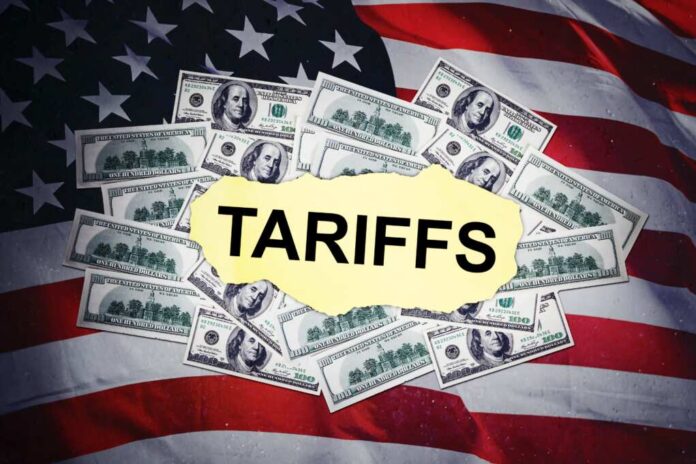
The U.S. economy shrank for the first time in three years, as businesses scrambled to import goods ahead of President Trump’s sweeping tariffs, igniting fears of a looming recession.
At a Glance
- U.S. GDP contracted by 0.3% in Q1 2025, first decline since 2022
- Imports surged 41.3% as firms rushed to beat new tariffs
- Net exports subtracted nearly 5 percentage points from GDP
- Consumer spending growth slowed to 1.8% amid inflation concerns
- Economists warn of prolonged economic challenges due to trade policies
Import Surge Drives Economic Contraction
The U.S. economy contracted at an annualized rate of 0.3% in the first quarter of 2025, according to Commerce Department data. It marks the first such decline since 2022 and was driven largely by a 41.3% surge in imports—an historic spike—as companies rushed to front-load goods before President Trump’s latest tariff hikes took effect. As reported by Bloomberg News, the spike in imports led to the largest negative contribution from net exports on record, subtracting nearly five percentage points from overall GDP.
Consumer spending rose by 1.8%, its slowest pace since mid-2023 but still higher than many analysts had forecast. Meanwhile, core inflation ticked up to 3.5%, adding pressure to the Federal Reserve’s next move on interest rates, with economists now uncertain whether expected cuts will materialize.
Watch Bloomberg’s report on the data at US economy contracts for first time since 2022 on imports surge.
Business Investment Shows Surprising Strength
Despite the contraction, business investment surged in the first quarter. Equipment investment rose at an annualized rate of 22.5%, the fastest pace since 2020, according to The Wall Street Journal. Gains were particularly strong in sectors like commercial aircraft and information processing equipment, hinting at sustained private sector resilience.
Economists often turn to a metric called “final sales to private domestic purchasers” to assess core demand—this rose by 3%, suggesting the economy may not be as weak as the headline GDP number implies. Inventory buildups also contributed positively, offering potential momentum going into the second quarter, as noted by Financial Post.
Tariff Policy Implications and Long-Term Outlook
The contraction underscores the disruptive impact of aggressive trade policy. While the Trump administration defends tariffs as tools to secure national interests and domestic industries, many economists warn of long-term downsides including inflation, supply chain volatility, and diminished consumer purchasing power. The U.S. now faces its highest effective tariff rate in over a century, as highlighted in the Washington Post.
Complicating the outlook further, federal government spending declined by 1.4% in the quarter, with defense outlays dropping a steep 8%. Labor market data showed weaker-than-expected job gains, even as labor costs climbed by 0.9%, pointing to potential wage-driven inflation pressures. Consumer confidence, already sagging, could falter further under these conditions.
While some economists expect a GDP rebound in Q2 as import levels normalize and inventories drive production, others believe the current downturn may mark the beginning of deeper economic instability. As Politico reports, policymakers remain divided on whether this is a short-term policy shock or the early signs of a broader slowdown. Either way, uncertainty reigns as 2025 unfolds.




















